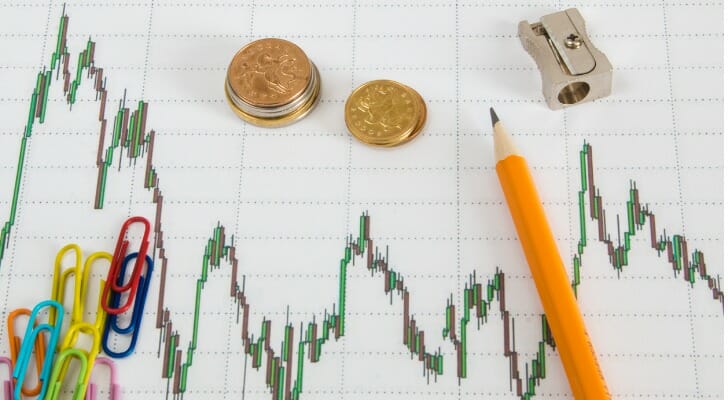 Investing trends come and go, and the rise of the meme stock is one of the latest to make the rounds. Defining meme stocks is difficult, but generally they’re stocks that manage to gain a lot of attention from investors thanks largely to social media chatter. They may be value stocks, growth stocks; they may be large cap or small cap. They can represent a variety of market sectors and industries. Meme stocks can sharply boost your portfolio’s volatility, which is something a financial advisor can help you manage.
Investing trends come and go, and the rise of the meme stock is one of the latest to make the rounds. Defining meme stocks is difficult, but generally they’re stocks that manage to gain a lot of attention from investors thanks largely to social media chatter. They may be value stocks, growth stocks; they may be large cap or small cap. They can represent a variety of market sectors and industries. Meme stocks can sharply boost your portfolio’s volatility, which is something a financial advisor can help you manage.
What Is a Meme Stock?
Meme stocks can be tricky to define for a simple reason: the meme stock label is a relatively new phenomenon.
A meme is a broad term that’s used to define any running joke or idea that gets recycled on the internet, particularly through social media channels. Memes get shared across social platforms and the ones that are shared most often can end up becoming part of the collective lexicon. (See the “One does not simply…” and “Change my mind” memes for reference.)
Following that, a meme stock could be defined as a stock that draws a lot of attention from a large group of people thanks to the power of social media sharing. GameStop is a prime example. Early in 2021, this stock took off thanks largely to the r/WallStreetBets Reddit community. Social chatter around the stock grew so loud that GameStop’s price surged by 400% in January.
Identifying the next meme stock trend can be difficult, as they’re not necessarily value stocks or growth stocks or blue-chip stocks. They may be overvalued by the market or underpriced. Meme stocks can be newer companies or more established ones. There’s really no way to tell which company will become a meme stock target for investors.
The common thread among them, however, is that social media tends to fuel interest in them. That’s what happened with GameStop as everyday investors banded together to push the stock’s price “to the moon,” partly in defiance of hedge fund investors who had bet against the company. As the stock went viral, more investors joined in to reap the profits and some hedge funds suffered major losses as a result.
FOMO and YOLO are often linked to the meme stock push. Short for “fear of missing out” and “you only live once,” respectively, they’re typically discussed in terms of how they affect the behavior of millennials and Gen Z, particularly in their dealings with money. In the case of meme stocks, investors may gravitate toward a stock because they’re afraid to miss out on a buying opportunity or because it seems to be what everyone else is doing or because they figure, why not?
Are Meme Stocks a Good Buy?
 There’s a case to be made for investing in meme stock, though there are some risks involved. In the case of GameStop, for example, investors who bought in when the stock was still trading at under $20 a share and sold when it peaked at nearly $350 a share in late January could have collected a tidy profit of roughly $310 per share. On the other hand, those investors who held on to their GameStop shares after this peak would have seen their value drop back to just over $40 by mid-February. They’d still have been ahead at this point but by a much narrower margin. As of mid-July, the stock had clawed back some of its earlier gains, trading at around $166 a share. So to put it lightly, investing in meme stock can be something of a rollercoaster ride.
There’s a case to be made for investing in meme stock, though there are some risks involved. In the case of GameStop, for example, investors who bought in when the stock was still trading at under $20 a share and sold when it peaked at nearly $350 a share in late January could have collected a tidy profit of roughly $310 per share. On the other hand, those investors who held on to their GameStop shares after this peak would have seen their value drop back to just over $40 by mid-February. They’d still have been ahead at this point but by a much narrower margin. As of mid-July, the stock had clawed back some of its earlier gains, trading at around $166 a share. So to put it lightly, investing in meme stock can be something of a rollercoaster ride.
That may not be much of an issue for younger investors who have a higher risk tolerance and a longer time horizon to recover from losses. But for a middle-aged investor or someone who’s five years away from retirement, investing in meme stocks may be a portfolio mismatch.
The main problem with meme stocks is that it can be difficult to predict which ones will take off and how long the ride will last. In the case of GameStop, the ascension happened quickly and the comedown was even faster. Investors who were hoping for a long-term rise in pricing may have been disappointed by how quickly it reversed.
Check Fundamentals Before Following the Crowd
Meme stocks can be attractive simply because there’s room for money to be made if a stock goes viral. But they aren’t necessarily a sustainable bet for a portfolio, especially for investors who may lean toward more conservative investments.
If you’re interested in meme stocks, it can be helpful to check under the hood before venturing in. This means taking a closer look at a company’s fundamentals, which are a way to measure its overall financial health. You can do that by comparing things like the price-to-earnings (P/E) ratio and earnings per share. You can also look at how much debt the company is carrying relative to its assets and cash flow.
If you’re an active day trader, you can also look at technical indicators as well. Technical indicators can help you gauge how a stock is trending currently and where it may be headed next, based on overall market conditions. For technical indicators, you’re focusing on these like moving averages or Bollinger bands to track trends.
Choose the Right Brokerage for Meme Stock Trading
If you’re set on trading meme stocks, look for a brokerage that charges zero commissions to trade them. More online brokerages are moving to a $0 fee model for stock and ETF trading, though some do still charge commissions. Going with a zero-fee option could make sense if you’re a cost-conscious trader.
Also, keep in mind any restrictions a brokerage may place around meme stocks. At the peak of the GameStop trading frenzy, for example, online trading app Robinhood limited the number of shares investors could trade. While those limits were eventually eased, you may want to avoid a situation where your brokerage could cap your ability to trade.
The Bottom Line
 Investing in meme stocks could pay off, at least in the short term, though there are some risks to keep in mind. They certainly add some excitement to your investment portfolio and, for a certain type of investor, tend to sharply focus the mind. But the risk is that their price movements tend to be driven more investor speculation than fundamentals. Whether the meme stock will become a permanent fixture of the markets remains to be seen. In short, buyer beware.
Investing in meme stocks could pay off, at least in the short term, though there are some risks to keep in mind. They certainly add some excitement to your investment portfolio and, for a certain type of investor, tend to sharply focus the mind. But the risk is that their price movements tend to be driven more investor speculation than fundamentals. Whether the meme stock will become a permanent fixture of the markets remains to be seen. In short, buyer beware.
Tips for Investing
- If you’re considering a meme stock or two, ask yourself what’s driving interest in the stock. Then consider where the stock fits into your overall investing strategy. For example, if you prefer tech stocks or the financials sector, ask yourself if it makes sense to invest in a company that sells vegan diet foods just because it happens to be trending amid a sudden spike in social media chatter. This can help you put meme stocks and where they might (or might not) fit into your portfolio in perspective.
- Consider talking to a financial advisor about the pros and cons of meme stocks and whether you should invest in them or steer clear. If you don’t have a financial advisor yet, finding one doesn’t have to be complicated. SmartAsset’s financial advisor matching tool can help. You can get personalized advisor recommendations online just by answering a few simple questions. Get started now and find professional advisors in your local area.
Photo credit: ©iStock.com/coldsnowstorm, ©iStock.com/RomanovRV, ©iStock.com/101cats